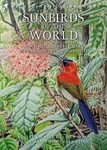About this book
At birdfeeders and in backyards across North America, the dark-eyed junco, or snowbird, can be found foraging for its next meal. With an estimated population of at least 630 million, juncos inhabit forests, parks, and even suburban habitats, making them one of the continent's most abundant and easily observable songbirds. But while common and widespread, juncos also exhibit extraordinary diversity in color, shape, size, and behavior across their range, making them ideal study subjects for biologists interested in ecology and evolutionary diversification.
Intended for scholars, citizen scientists, and amateur ornithologists, alike, Snowbird synthesizes decades of research from the diverse and talented researchers who study the Junco genus. Though contributors approach their subject from a variety of perspectives, they share a common goal: elucidating the organismal and evolutionary processes by which animals adapt and diversify in response to environmental change. Placing special emphasis on the important role that underlying physiological, hormonal, and behavioral mechanisms play in these processes, Snowbird not only provides a definitive exploration of the junco's evolutionary history and behavioral and physiological diversity but also underscores the junco's continued importance as a model organism in a time of rapid global climate change. By merging often disparate biological fields, Snowbird offers biologists across disciplines an integrative framework for further research into adaptation, population divergence, and the formation of new species.
Contents
Preface
Chapter 1. Introduction
Ellen D. Ketterson and Jonathan W. Atwell
PART I. Opportunities and Challenges in Evolutionary and Integrative Biology Presented by the Avian Genus Junco
Part 1 Narrative Preamble
Chapter 2. The Junco: A Common Bird and a Classic Subject for Descriptive and Experimental Studies in Evolutionary and Integrative Biology
Ellen D. Ketterson and Jonathan W. Atwell
Chapter 3. Axes of Biogeographic Variation in the Avian Genus Junco: Habitat, Morphology, Migration, and Seasonal Timing, with Implications for Diversification under Heteropatry
Jonathan W. Atwell, Dawn O’Neal, and Ellen D. Ketterson
PART II. Hormones, Phenotypic Integration, and Life Histories: An Endocrine Approach
Part 2 Narrative Preamble
Chapter 4. Phenotypic Engineering: A Long-Term Study Using Hormones to Study Life-History Trade-Offs and Sexual Conflict
Nicole M. Gerlach and Ellen D. Ketterson
Chapter 5. Hormonal Pleiotropy and the Evolution of Correlated Traits
Joel W. McGlothlin and Ellen D. Ketterson
Chapter 6. Individual Variation and Selection on Hormone-Mediated Phenotypes in Male and Female Dark-Eyed Juncos
Kristal Cain, Jodie M. Jawor, and Joel W. McGlothlin
Chapter 7. Diving Deeper into Mechanism: Individual and Sex Differences in Testosterone Production, Sensitivity, and Genomic Responses
Kimberly A. Rosvall, Christine M. Bergeon Burns, and Mark P. Peterson
PART III. Evolutionary Diversification in the Avian Genus Junco: Pattern and Process
Part 3 Narrative Preamble
Chapter 8. More than Meets the Eye: Lineage Diversity and Evolutionary History of Dark-Eyed and Yellow-Eyed Juncos
Borja Milá, Pau Aleixandre, Sofía Alvarez-Nordström, and John McCormack
Chapter 9. The Potential Role of Parapatric and Alloparapatric Divergence in Junco Speciation
Trevor D. Price and Daniel M. Hooper
PART IV. Mechanisms of Divergence among Populations
Part 4 Narrative Preamble
Chapter 10. Shifts in Hormonal, Morphological, and Behavioral Traits in a Novel Environment: Comparing Recently Diverged Junco Populations
Jonathan W. Atwell, Danielle J. Whittaker, Trevor D. Price, and Ellen D. Ketterson
Chapter 11. A Physiological View of Population Divergence: Comparing Hormone Production and Response Mechanisms
Christine M. Bergeon Burns and Kimberly A. Rosvall
Chapter 12. Mate Choice in Dark-Eyed Juncos Using Visual, Acoustic, and Chemical Cues
Danielle J. Whittaker and Nicole M. Gerlach
Chapter 13. Dark-Eyed Junco Song: Linking Ontogeny and Function with a Potential Role in Reproductive Isolation
Gonçalo C. Cardoso and Dustin G. Reichard
Chapter 14. Standing on the Shoulders: Agendas for Future Research Addressing Evolutionary and Integrative Biology in a Rapidly Evolving Songbird
Ellen D. Ketterson and Jonathan W. Atwell
Glossary
Contributors
Index
Customer Reviews
Biography
Ellen D. Ketterson is distinguished professor of biology and gender studies at Indiana University, Bloomington, a fellow of the American Academy of Arts & Sciences, and president of the American Society of Naturalists.
Jonathan W. Atwell is a research scientist and educator at Indiana University, Bloomington; he recently produced an award winning and widely distributed science film, Ordinary Extraordinary , which serves as a complement to Snowbird.

















![Ageing & Sexing of Migratory East Asian Passerines [English / Chinese]](http://mediacdn.nhbs.com/jackets/jackets_resizer_medium/25/250760.jpg?height=150&width=115)
















